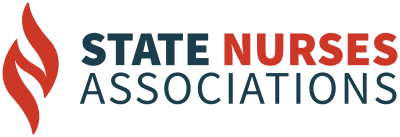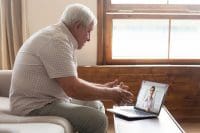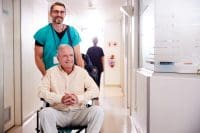Nursing programs have seen an increase in enrollment in student nurses with disabilities (SNWD) who require accommodation in the classroom and clinical setting. Although there may be challenges for SNWD, “reasonable” accommodations are assigned based on individual assessment at the discretion of the institution’s Student Accessibilities Services in compliance with the American Disabilities Act (Lucas et al., 2022). Accommodations should include supportive academic plans that remove barriers that impede learning for SNWD while maintaining the fundamental objectives/components of academic programs (Neal-Boyan & Miller, 2020). Nursing faculty and SNWD sometimes disagree over their respective assumptions regarding reasonable accommodations, with SNWD holding one set of beliefs about the meaning of their accommodations and faculty holding a different set of beliefs. The struggle over questions of accommodation can lead to visceral responses on the part of both parties.
According to Janoff-Bulman (2002), basic assumptions are the views of ourselves and our environment that “represent the total push and pull of the cosmos” (p. 4). Nursing faculty and SNWDS sometimes find that their respective assumptions about reasonable accommodations are significantly discrepant. On the one hand, faculty may assume that nursing students, and therefore, by extension, nurses, should look and practice like them, often perceiving students’ interpretations of approved accommodations as unreasonable (Levey, 2014). They sometimes maintain that certain student disabilities will serve merely to compromise patient safety (Marks, 2007; Sowers & Smith, 2004), rendering affected students unfit for practice (Tee et al., 2010). Moreover, faculty may see SNWDs as burdens on their time (Neal-Boylan & Smith, 2016), as many approved accommodations demand faculty members’ rethinking about how they teach, test, and evaluate. Alternatively, for their part, SNWDs may assume that they work harder than other students for similar academic results. They want to be treated like their fellow nursing students with no disability. They often feel the need to prove themselves, believe they work harder to be accepted by their peers (Neal-Boylan & Miller, 2017), and that faculty members view them negatively (Shpigelman et al., 2016). Furthermore, SNWDs sometimes express unrealistic expectations of what faculty behaviors constitute “reasonable” accommodations.
The Theory of Shattered Assumptions
The Theory of Shattered Assumptions is used to analyze the metaphorical feud between faculty and SNWDs. Janoff-Bulman (1992) purported that individuals embrace strong assumptions about the surrounding world and their personal worth. “Our fundamental assumptions,” she noted, “are the bedrock of our conceptual system; they are the assumptions that we are least aware of and least likely to change” (p.5). Each person holds basic world assumptions, including benevolence, meaningfulness, and worthiness of self (Janoff-Bulman, 1992). In essence, this theory is built on expectations that every individual wants to preserve personally established, experience-based beliefs, even in the face of disconfirming evidence. Invariably, when an event or series of events jumpstarts a process inconsistent with long-held personal beliefs, it leads to a shattering of longstanding assumptions.
Individuals confronting shattered assumptions are faced with the prospect of slowly integrating and necessarily coming to terms with a new worldview. The process requires a journey through many emotions, including denial, confrontation, recollection, blame, and guilt. The steps in the process include identification of the fundamental assumptions; the “traumatic event:” disillusionment and change in the assumptive world; processing the powerful new data; and rebuilding assumptions. Although the original premise of the Theory of Shattered Assumptions addressed recovery from traumatic events, it has broad applicability in the analysis of the struggle engaging nursing faculty and SNWDs.
Theory of Shattered Assumption Applied to Nursing Education
Nursing faculty and SNWD each come to the classroom with basic world assumptions. For example, within the assumption of worthiness of self, nursing faculty may believe that a student needs to attend class to be a good student nurse; therefore, attendance flexibility accommodations do not make sense. From the SNWD’s benevolence perspective, nursing faculty must be kind as they are helpers, understand what the SNWD needs to succeed, and will do all they can to help them. From these basic assumptions, the “traumatic event” of clashing of assumptions occurs. These are examples that students and faculty have said about deeply held assumptions.
- Faculty are gatekeepers of nursing, and they pick and choose who they feel deserves to be a nurse and weed you out versus trying to help you (Neal-Boylan & Miller, 2017).
- SNWD may assume accommodations cannot be made for them. They must be able to do the same task or whatever nurses must do (Neal-Boylan & Miller, 2017).
- Faculty associated disability with a lack of intelligence and did not understand there was more than one way to do things (Neal-Boylan & Miller, 2017).
- You are not accommodating their learning…you are accommodating them to decrease the “set apart” feeling felt by students with learning disabilities (Yar-brough & Welch, 2021).
- Challenges to testing schedules: SNWD may assume faculty are available for them to test anytime. Scheduling during the final exam time is a nightmare and is overwhelming by the number of students with accommodations. The logistics of planning for academic accommodations for testing- impacted faculty’s schedules (Yarbrough & Welch, 2021).
- SNWDs may assume that they work harder than other students for similar academic results (Ashcroft & Lutfiyya, 2013) and that faculty members view them negatively (Shpigelman et al., 2016).
- Faculty are not experts with academic accommodations resources at their institutions. Faculty and SNWD are supported by disabilities services to understand the processes while adhering to the law (Yarbrough & Welch, 2021).
- Resources for faculty can be the best ally; they are the experts on learning disabilities and can help students create a plan of accommodations (Yarbrough & Welch, 2021).
The process of moving past the “traumatic event” involves the identification of assumptions of both faculty and SNWD, understanding the character of the “traumatic event” that has precipitated the clashes of assumptions, working through the process of disillusionment and change which demarcates the experiences of both faculty and SNWDs, analyzing newly recognized data about the accommodation process, and rebuilding a more congruent approach between and among faculty and SNWD assumptions.
Student Accessibility Services play a significant role in reconstructing assumptions that ultimately benefit faculty, SNWD, and nursing. The goal is to work with each SNWD to determine what they need instead of assuming what the student might want or need is an important distinction (Neal-Boylan & Miller, 2017). Planning and collaboration are essential to support SNWD and the nursing faculty to create an inclusive, positive environment that supports academic success. Rebuilding assumptions becomes possible as nursing faculty, the accommodations office, and SNWDs have open channels of communication and address concerns about implementing reasonable accommodations under the ADA. Through the Theory of Shattered Assumptions, historical, hard-wired beliefs can be rebuilt through education, communication, interpretation, and resource support.
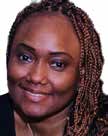

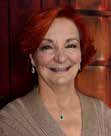

References
Ashcroft, T.J. & Lutfiyya, Z.M. (2013). Nursing educators’ perspectives of students with disabilities: A grounded theory study. Nurse Education Today, (33), p. 1316-21.
Janoff-Bulman, R. (1992). Shattered Assumptions. Toronto: The Free Press.
Janoff-Bulman, R. (2002). Shattered Assumptions. Toward a New Psychology of Trauma. Toronto. The Free Press.
Levey, J. (2014). Attitudes of nursing faculty towards nursing students with disabilities: An integrative review. Journal of Postsecondary Education and Disability, (27)3, p. 321-330.
Lucas, L. S., Silbert-Flagg, J. A., & D’Aoust, R. F. (2022). Nursing students with disabilities: A guide to providing accommodations. Nursing Clinics of North America, 57(4), 671-683. https://doi.org/10.1016/j.cnur.2022.06.012
Neal-Boylan, L. & Miller, M. (2017). Treat me like everyone else: The experience of nurses who had disabilities while in school. Nurse Educator 42(4). 176-180. https://doi.org/10.1097/NNE.0000000000000348
Neal-Boylan, L. & Smith, D. (2016). Nursing students with physical disabilities: Dispelling myths and correcting misconceptions. Nurse Educator, (41), 1, p. 13-18.
Shpigelman, C., Zlotnick, C. & Brand, R. (2016). Attitudes toward nursing students with disabilities: Promoting social inclusion. Journal of Nursing Education, (55), 8, p. 441-448.
Tee, S.R., Owens, K., Plowright, S., Ramnath, P., Rourke, S., James, C., & Bayliss, J. (2010). Being reasonable: Supporting nursing students in practice. Nurse Education in Practice, (10), p. 216-221.
Yarbrough, A. & Welch, S. (2021). Uncovering the process of reasonable academic accommodations for prelicensure nursing students with learning disabilities. National League of Nursing (42)1, 5-10. https://doi.org/10.1097/01.NEP.000000000000666
